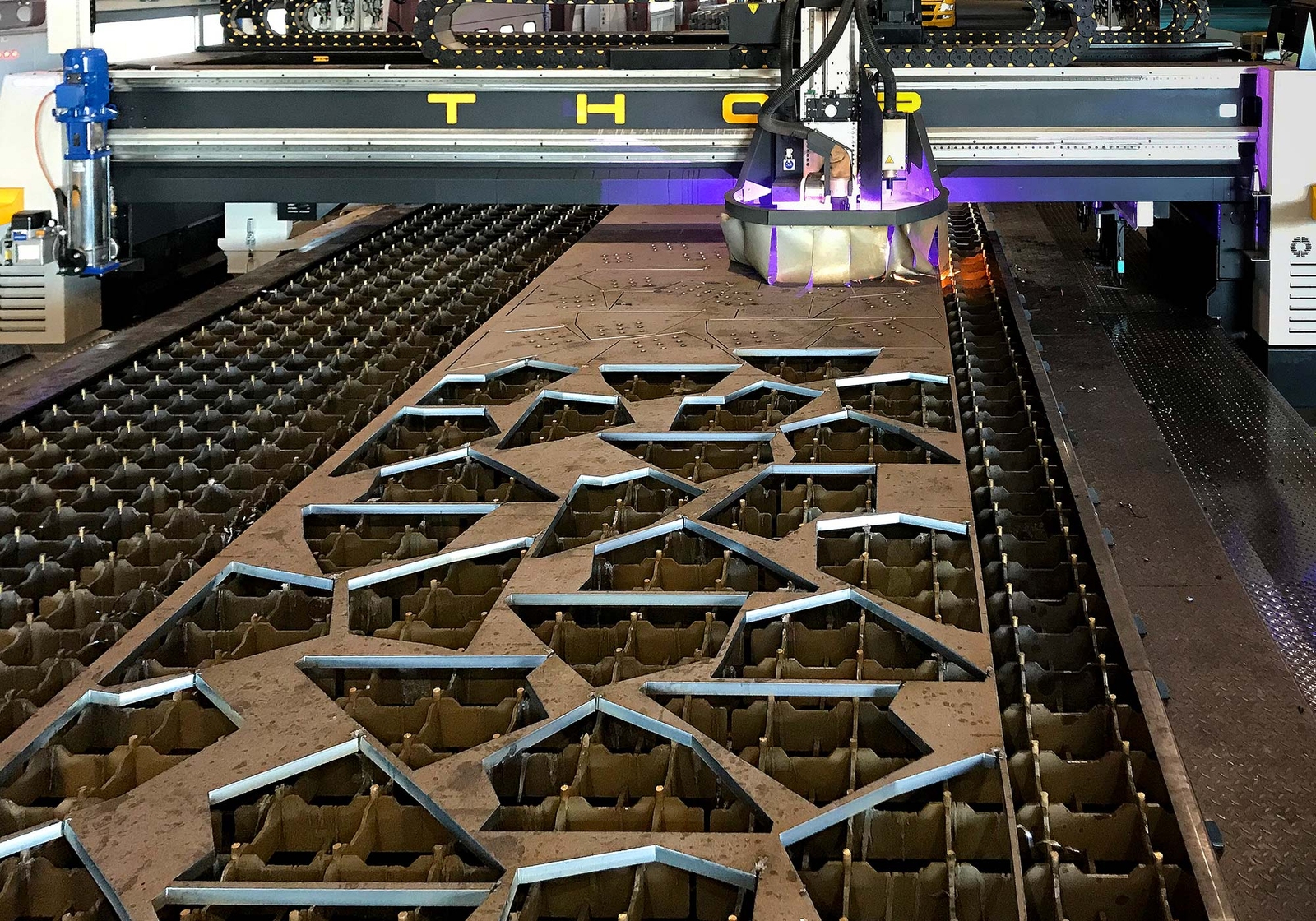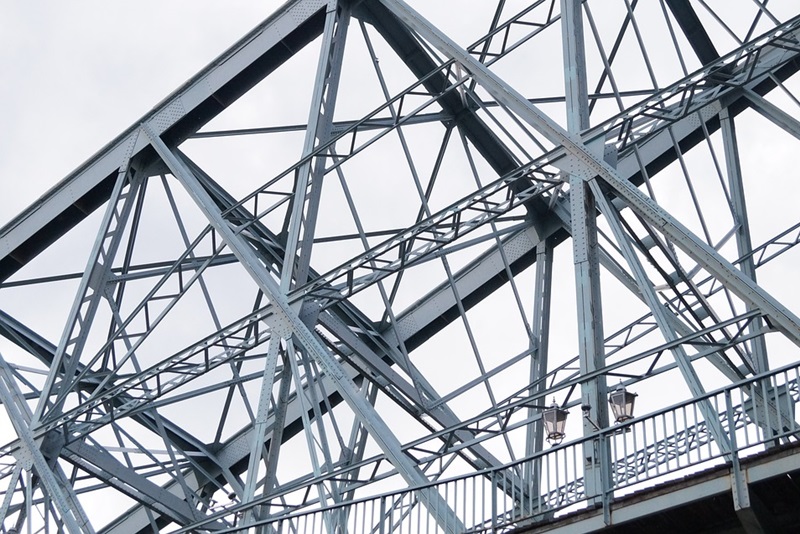Steel Fabrication Melbourne: Workmanship Satisfies Development
Steel Fabrication Melbourne: Workmanship Satisfies Development
Blog Article
Comprehensive Analysis of Cutting-Edge Techniques in Steel Manufacture Sector
As the steel fabrication market continues to advance, the assimilation of cutting-edge methods has ended up being important for staying competitive and meeting the needs of modern-day manufacturing requirements. From laser reducing developments to the usage of robotics and 3D printing in steel production, the landscape of fabrication strategies is swiftly transforming. With each development bringing its own set of advantages and obstacles, an extensive analysis of these techniques is critical for business intending to streamline their procedures, enhance accuracy, and inevitably, raise the high quality of their steel fabrication result. In this dynamic sector where modern technology plays a critical function, comprehending the nuances of these advanced methods is not simply an option yet a requirement for those looking to advance in the ever-evolving globe of steel manufacture.
Laser Reducing Innovations
In the world of steel manufacture, laser reducing developments have reinvented the precision and effectiveness of steel shaping processes. By using the power of focused laser beam of lights, suppliers can currently accomplish unequaled levels of accuracy when puncturing numerous kinds of steels. This innovation enables elaborate styles to be performed with minimal product waste, making it an affordable service for sectors needing high precision parts.
One of the essential advantages of laser cutting is its ability to take care of a vast array of materials, consisting of stainless steel, light weight aluminum, and carbon steel, easily. The process produces tidy, burr-free sides, getting rid of the need for added finishing steps. Additionally, the non-contact nature of laser cutting minimizes the danger of product contamination, resulting in better output.
Furthermore, laser reducing equipments can be set to make swift, precise cuts, significantly reducing manufacturing time compared to standard reducing techniques. This rate and accuracy make laser reducing particularly ideal for mass production atmospheres where efficiency is vital. As modern technology continues to advancement, laser cutting is positioned to play an increasingly essential duty in the steel manufacture sector.

CNC Machining Innovations
The development of CNC machining innovations has introduced a new era of precision and efficiency in the steel fabrication sector. Computer Numerical Control (CNC) machines have actually changed steel manufacture by offering unequaled precision and repeatability in the production process. Alpha reo. Among the key advancements in CNC machining is the assimilation of advanced software program systems that enable real-time tracking and adjustments, causing improved productivity and high quality control
Additionally, the advancement of multi-axis CNC makers has enabled the manufacture of complex steel components with complex styles that were formerly challenging to produce. These makers can execute a broad variety of machining operations, consisting of milling, exploration, transforming, and grinding, all with high degrees of precision.
In addition, the consolidation of automation and robotics in CNC machining has structured manufacturing procedures, reduced lead times, and decreased the margin of mistake. This integration of cutting-edge innovations not only increases effectiveness but also ensures regular quality across all made steel components. Finally, CNC machining developments proceed to drive innovations in the steel construction industry, establishing brand-new criteria for precision and efficiency.
Automated Welding Technologies
Automated welding modern technologies have transformed the steel manufacture industry, enhancing efficiency and accuracy in the welding procedure. These advanced modern technologies utilize computer-controlled systems to automate the welding process, causing higher performance degrees and boosted weld quality. One of the vital benefits of automated welding is the ability to execute complicated welds with regular precision, lowering the chance of errors and rework.
Robotic welding systems are at the leading edge of automated welding innovations, supplying unparalleled rate and precision. These systems can deal with a large range of welding tasks, from easy to complex, effortlessly (steel fixing). By making use of advanced sensing units and software program, robot welders can adapt to variants in material and joint geometry, making certain an uniform and dependable weld
Furthermore, automated welding technologies enhance office security by minimizing the direct exposure of human welders to unsafe fumes and intense warm. As the steel fabrication sector remains to progress, incorporating automated welding innovations will be vital for firms wanting to remain affordable and fulfill the growing needs for high-quality welded products.
Robotics Combination in Construction
Making use of robot systems in construction procedures has actually become a critical approach for improving effectiveness and accuracy in modern-day production environments. Robotics go to the website assimilation in steel construction uses a myriad of benefits, consisting of raised efficiency, enhanced quality assurance, and enhanced security measures. These innovative robot systems are geared up with sophisticated sensing units and programs capabilities, permitting them to execute elaborate tasks with a high degree of precision and repeatability.
Among the crucial advantages of robotics integration in steel construction is the capability to automate repetitive tasks, such as product handling, reducing, welding, and assembly procedures. This not only accelerates production cycles yet additionally lowers the risk of human mistake, resulting in higher overall product high quality. Furthermore, robots can operate 24/7, significantly increasing manufacturing outcome and meeting limited project deadlines.

3D Printing in Steel Production
Having actually revolutionized the steel fabrication market with robotics combination, the burgeoning expedition of 3D printing in steel manufacturing is poised to more breakthrough the realm of modern-day production strategies. 3D printing, additionally called additive production, uses unmatched style flexibility and intricacy, enabling the creation of elaborate steel structures that were previously unattainable via standard manufacturing methods. By making use of computer-aided layout (CAD) software program, manufacturers can precisely control the layer-by-layer deposition of steel product, causing components with enhanced capabilities and geometries.
Among the vital advantages of 3D printing in steel production is its capability to reduce product waste considerably. Unlike subtractive manufacturing processes where excess product is cut away, 3D printing only uses the needed amount of steel needed for the last component. This effectiveness not only leads to cost financial savings however additionally lines up with sustainable manufacturing methods by lessening environmental influence.
Furthermore, 3D printing enables fast prototyping and personalization, permitting for the production of little batches of intricate steel elements with brief lead times. As the modern technology remains to grow and become much more accessible, its combination into mainstream steel fabrication processes is expected to drive advancement and effectiveness throughout the industry.
Conclusion
In verdict, the steel fabrication sector has seen significant developments in techniques such as laser cutting, CNC machining, automated welding, robotics integration, and 3D printing. These sophisticated modern technologies have revolutionized the method steel items are manufactured, bring about boosted performance, precision, and cost-effectiveness. Continued financial investment in these ingenious strategies is essential for the sector to stay competitive and satisfy the demands of contemporary manufacturing procedures.
As the steel construction industry proceeds to progress, the combination of advanced strategies has ended up being important for staying affordable and browse around here satisfying the demands of modern-day manufacturing standards.One of the key advantages of laser cutting is its ability to handle a broad array of products, consisting of stainless steel, aluminum, and carbon steel, with simplicity.Automated welding technologies have changed the steel construction industry, enhancing performance and precision in the welding process.Having actually revolutionized the steel construction industry via robotics combination, the expanding exploration of 3D printing in steel manufacturing is positioned to additional development the world of modern manufacturing strategies.In conclusion, the steel construction sector has actually seen considerable advancements in strategies such as laser cutting, CNC Going Here machining, automated welding, robotics integration, and 3D printing.
Report this page